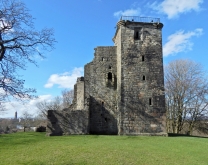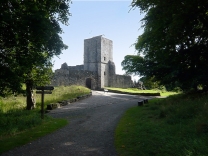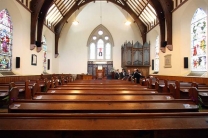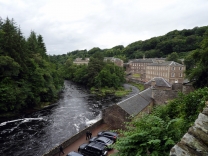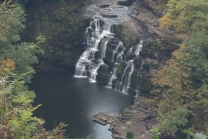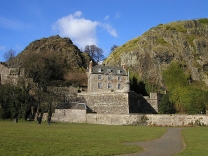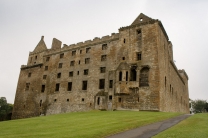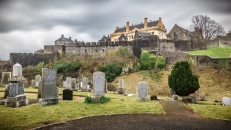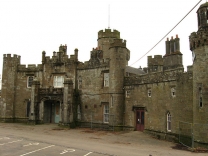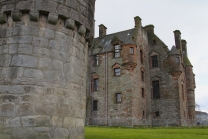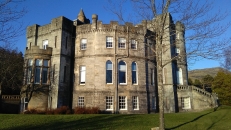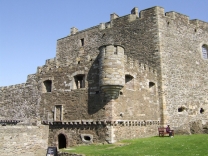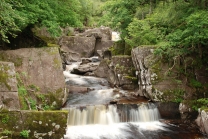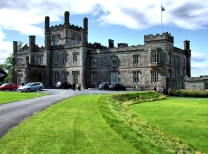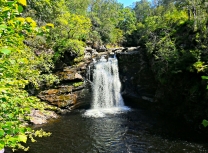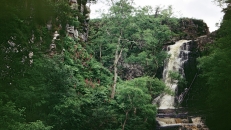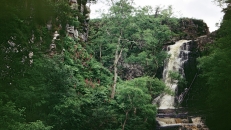Bothwell Castle
No video yet
Bothwell Castle
Bothwell Castle is a large medieval castle sited on a high, steep bank, above a bend in the River Clyde, in South Lanarkshire, Scotland. It is located between Bothwell and Uddingston, about 10 miles (16 km) south-east of Glasgow. Construction of the castle was begun in the 13th century by the ancestors of Clan Murray, to guard a strategic crossing point of the Clyde. Bothwell played a key role in Scotland's Wars of Independence, changing hands several times.
The huge cylindrical donjon was built in the 13th century, but before the rest of the castle was completed it was severely damaged in a series of sieges. Rebuilding in the early 15th century enlarged the castle, but it was abandoned by the 18th century. The present ruin is rectangular, with the remains of the donjon to the west, and the later Great Hall to the east. The courtyard is enclosed by long curtain walls, with round towers at the south-east and south-west corners. The castle was described by Scottish archaeologist William Douglas Simpson as one of the "foremost secular structures of the Middle Ages in Scotland".
History
King David I granted the barony of Bothwell to David Olifard (or Olifant), Justiciar of Lothian, in the mid 12th century. The lands passed to his descendants and by 1252 the barony became the property of Walter de Moravia, or Walter of Moray, who had married the last Olifard baron's heir. He began construction of the castle, but by the start of the Wars of Scottish Independence in 1296, only the main donjon, the prison tower, and the short connecting curtain wall were completed. Foundations of the remainder were probably in place, and would have been defended by a wooden palisade.
Wars of Scottish Independence
The forces of King Edward I of England invaded Scotland at the start of the war, and seized Bothwell, also capturing Walter's son, William Moray of Bothwell. The English garrison holding the castle was besieged by the Scots for 14 months in 1298—1299, and eventually capitulated. Edward I returned in 1301, capturing the castle once more with a force of 6800 men, and specially constructed siege...








